
COVID-19 in film: Signifier and Myth
Introduction
During the Covid-19 pandemic, many movie theaters were closed or heavily-reduced attendance for some time. Blockbuster movies such as Mulan by Disney were released through streaming services. Large franchises announced titles that will go straight to streaming. Meanwhile, we see a drop in cinema revenue. What does this mean societally? Other curiosities related to the movie sector like drive-in theaters also (re)emerged during Covid-19. What does this mean societally?
My thesis is that the movie industry during COVID-19 signifies and naturalizes our specific niched identities and the increased power of large companies (Barthes, 1957) (Barthes, 1983) (Blommaert &Varis, 2015) (Lev & Srivastava & Enache & Govindarajan, 2019).
Theoretical Framework: Barthesian Analysis
I will use Barthes's ideas of Mythology, signifier, and signified to prove this. I will now explain these terms. A myth is an object that naturalizes a certain social process Naturalization means social reality becomes accepted as a natural fact. For instance, according to Barthes bourgeois values naturalized into children by toys. They prejudge the bourgeois world of adults. The adult world becomes presumed to be a natural state instead of a socially determined one. The myths, in this case, would be the developments in the movie industry due to COVID-19 (Barthes, 1953). Furthermore, a signifier is an object that reflects or signifies a certain social phenomenon. What is reflect- ed is the signified. This is sightly adapted from Barthes as he would say it is more
what semiotic objects point to. (Barthes, 1964) This alteration is common executed in sociolinguistics using the word indexicality (Digit wiki, 2020)
I use these concepts because movies often reflect and cement our societal circum- stances. The stories we see shape our minds and when looking at the movies we often see traits of the society that produced it. By being popular they can naturalize these ideas. Nazi propaganda comes to mind (Power maker, 1947) (Hoffman, 1996).
Before applying anything, we must first understand the film industry during COVID- 19. After establishing this I will explain what and how this signifies societal trends. Then I will explain how the film industry during COVID-19 naturalizes societal circumstances.
Movie experiences before COVID-19
Cinemas before COVID-19
First, I will look at the trend that existed before the Covid-19 pandemic. The film industry has been transitioning for years. Streaming services have been on the rise for almost a decade. Even before this, the advent of VCRs started this trend. Cinemas have slowly grown while shrinking in numbers. Some think that cinemas will become something like stadiums. They say only large releases will go into theaters. Going to the movies would become like going to a concert or sports match.
Cinemas would give large, complicated experiences. The event would then be larger, more expensive, and less personal. (Silver & McDonnel, 2007)
Streaming services before COVID-19
Meanwhile, we saw the opposite happening at home. Movies often release to streaming quickly. People can watch on their own screens on their own time. The movies people get recommended are personalized. Streaming services try to understand people's tastes and make a targeted guess of what to show a user. Their previous behavior and thus identity shapes these recommendations (Sunstein, 2017). This should make the movie fit your tastes (Gomez-Uribe & Hunt, 2015) (Weber & Calvert, 2006).
These services are comparatively cheap. A whole year of Disney+ with hundreds of films included only cost about 70 dollars (Statista, 2020) (Statista, 2019). Even on-demand services offer brand new movies for 30 dollars. One can watch these movies with many people. If a family of four goes to the movies it would not be unreasonable for them to spend over a hundred dollars on this one night (Movietheaterprices.- com, 2020). At home, they could have spent half or less on this same evening. Thus, this makes it more accessible, personal, cheap, and comfortable.
In sum, before the pandemic, we saw two movements. On the one hand, movie theaters become more grandiose, less frequently found, less personal, and more expensive. On the other, we see that streaming services offer an accessible, cheaper, and personalized alternative.
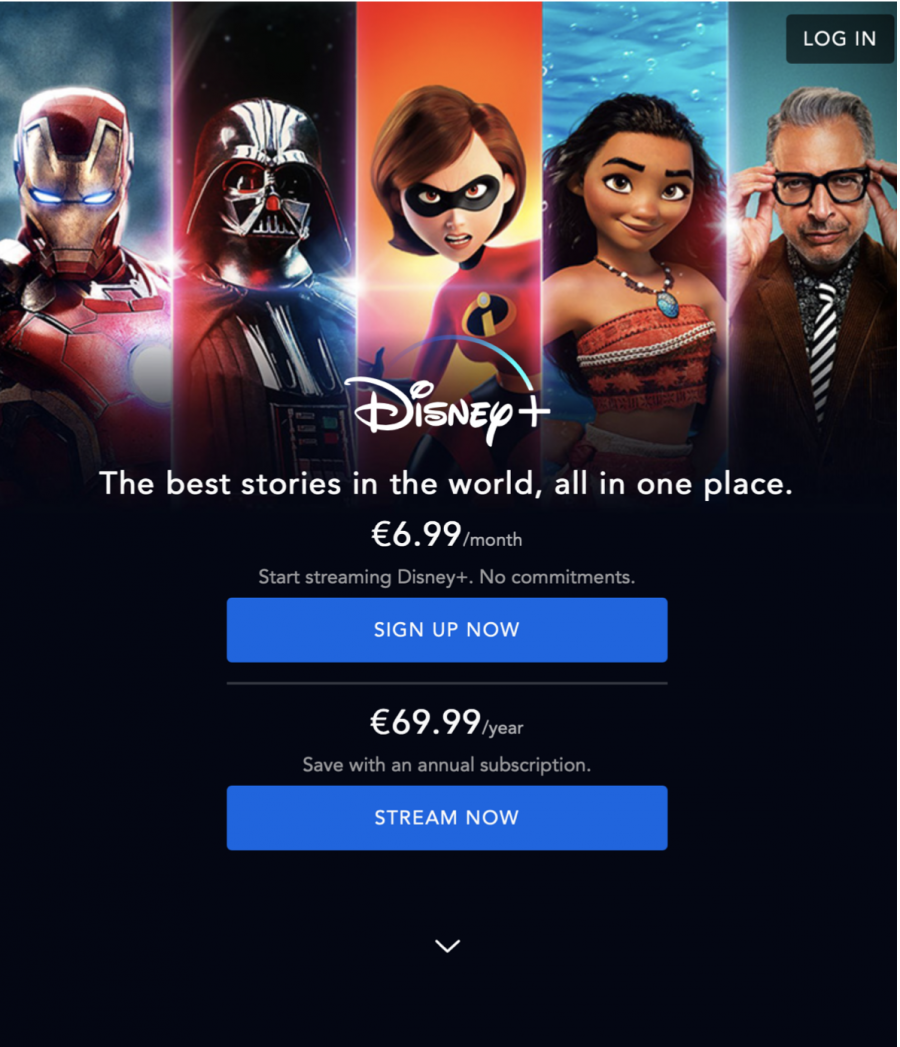
Disney+ add banner
Movie industry during COVID-19
During the pandemic, cinemas saw reductions in attendance and closures. Some countries banned cinemas from selling concessions. Large cinema companies like Cineworld have considered permanent closures. Many large movie studios such as Disney chose to either delay or cancel cinema releases. Some opted for a digital release on a streaming platform. Two examples are the movie Mulan and Black Widow. Black Widow was supposed to be the first movie of a new phase in the widely successful Marvel Cinematic Universe franchise. It got delayed twice. Mulan on the other hand was released to premier access on Disney+. On top of the subscription cost, viewers could pay a fee to watch the movie before it released on the normal Disney+ in December. Either way, cinemas will not see any revenue from these movies for the foreseeable future. Under here are some articles to illustrate the situation.
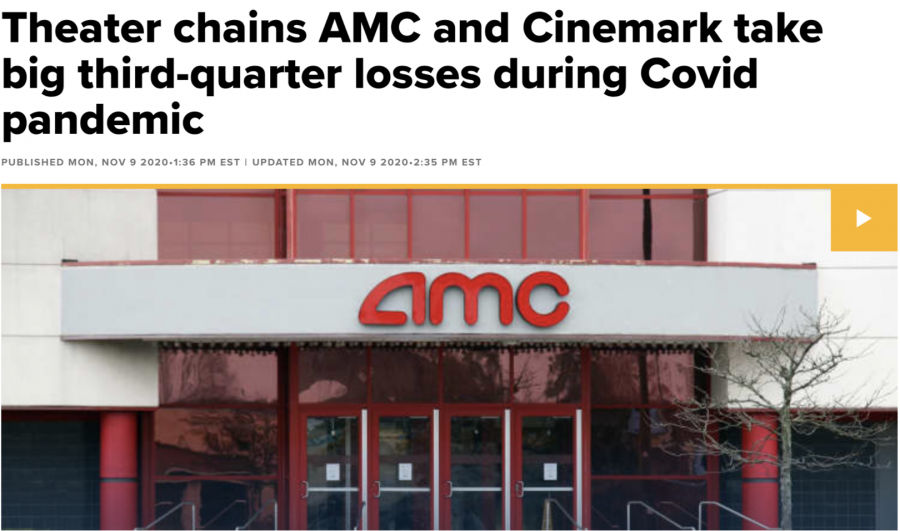
Big losses for cinemas during Covid
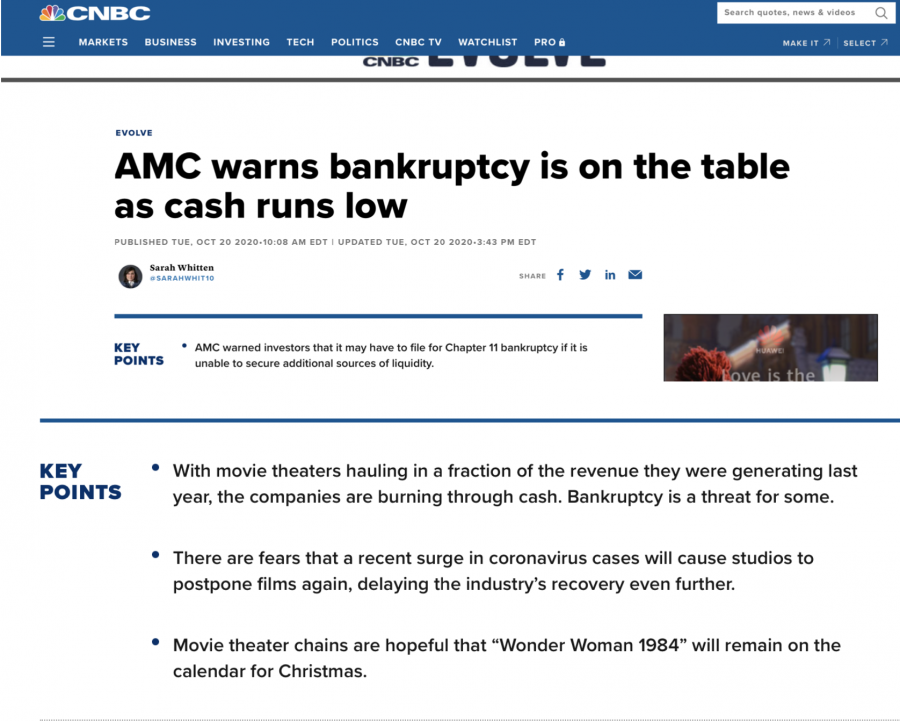
An example of a cinema company struggling during Covid-19
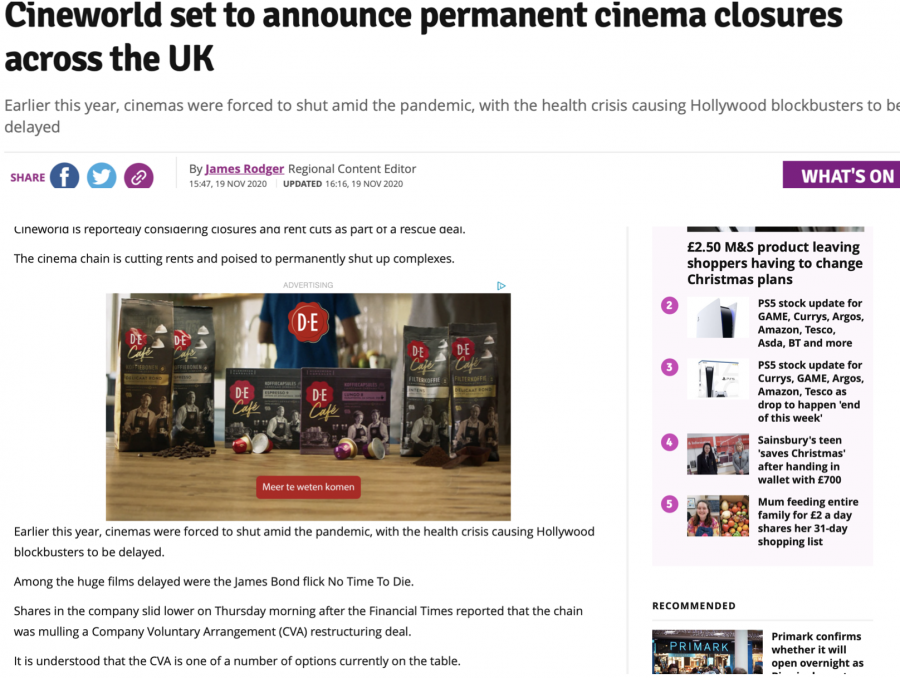
A cinema company in the UK closing some theaters permanently
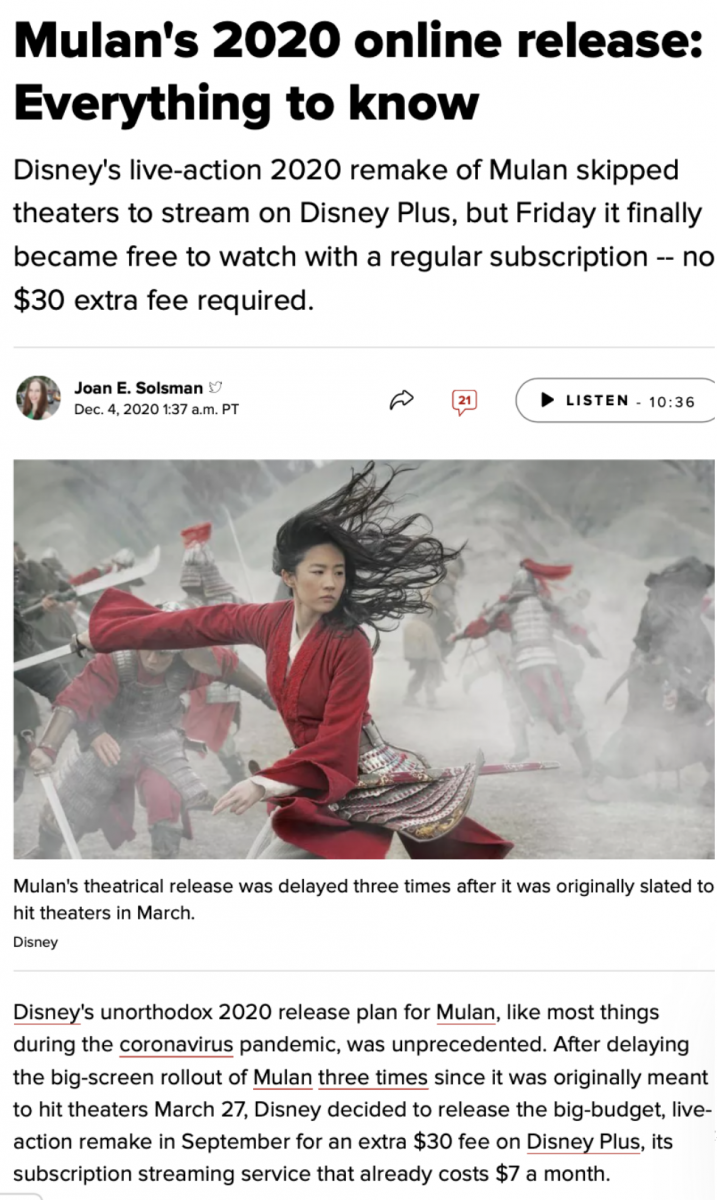
An example of a AAA movie release going to streaming services
The effects of COVID-19 on cinema attendance
I will examine the effects of the pandemic in three areas. First, cinemas have an even harder time keeping their doors open. Without blockbuster releases, there are no large crowds to draw. The forced closures and limited capacity exacerbate this issue as does the not being allowed to sell concessions. The film industry already lost 7 billion dollars due to COVID-19 in March 2020. This was largely due to closures. (Statista, 2020) Costs such as real estate and wages are not as flexible as customers. Costs re- main relatively steady while customers were hard to find. Thus, we see theaters going out of business, declaring bankruptcy, and laying off workers. The amount of theater is reduced. (Rijksoverheid, 2020) (Statista, 2020)
The effect of COVID-19 on streaming services
Meanwhile, streaming platforms have felt a real boost. Both Disney+ and Netflix have seen spikes in usage (Watson, 2020) (Watson, 2020). Both platforms have either declared or applied price increases. (Statista, 2019) (Statista, 2020) Thus there are fewer players in the film industry. Big studios and streaming services play a larger role while small studios and cinema companies become less important. Meanwhile, other means of viewing movies such as cinemas are disappearing at an accelerated rate. We see a growing oligopoly in film. Only a few companies have most of the power. That is why they can apply changes like price hikes (Stigler, 1964). The growing power of a few large companies is a societal trend as well (Lev & Srivastava & Enache. & Govindarajan, 2019) (Barthes, 1983).
Streaming services have also added features like group watch. Here users can stream movies together online. This might take some of the isolation out of watching a movie through a streaming platform. It also signifies the identity aspect of movies. All these people watching a movie together become sort of a social group. They interact in a certain manner and all do the same thing at the same time. The people with whom you watch these movies and thus likely share a taste in films become united in a manner. Your preferences in movies can then index a lot about your identity. Watching a movie with people you know is collective identity building. The algorithmic prediction still ensures we only see movies that match our taste (Sunstein, 2017). This is now validated by the friends we watch with even we are not physically together. They likely have the same taste and thus will confirm that staying in your filter bubble works (Kong & Yeah, 1997) (Sunstein, 2017).
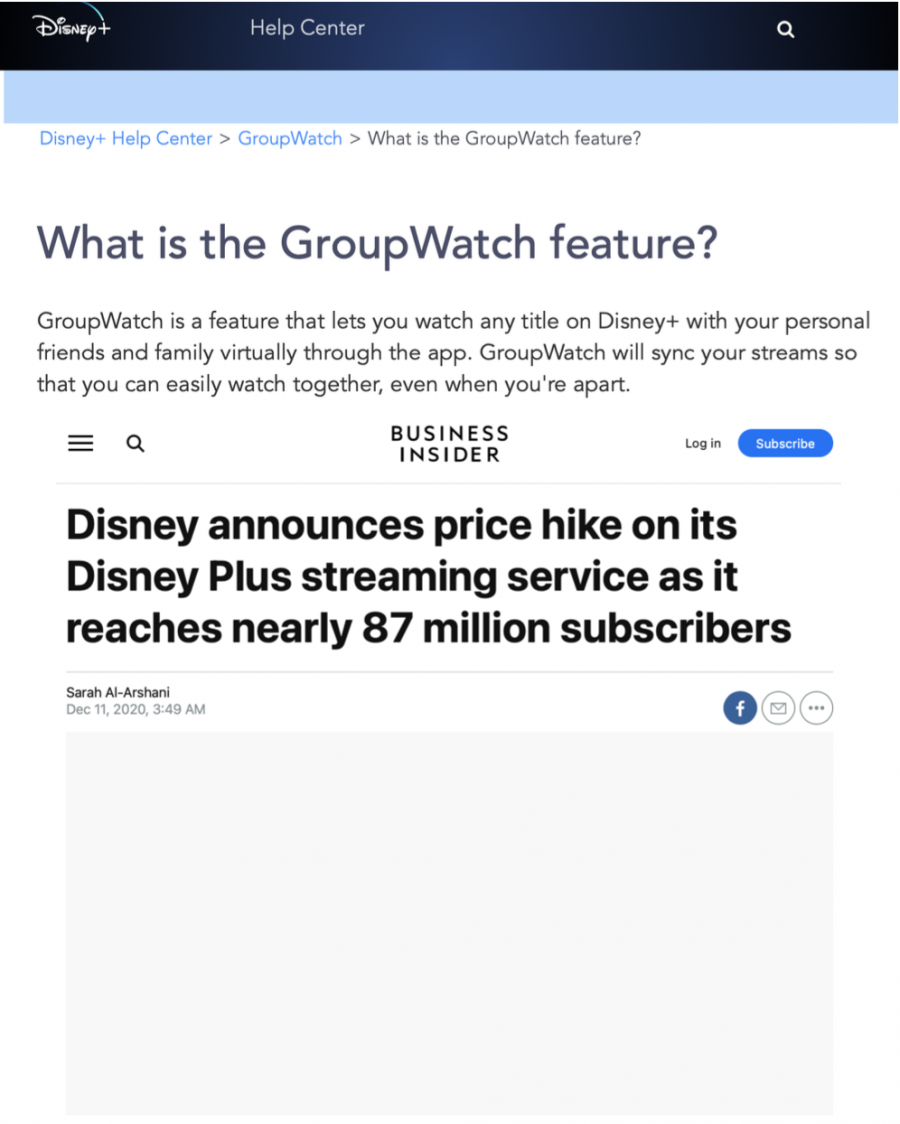
Streaming services add new social features tailored for Covid-19
Cinema experience types connected to niches.
However, we have seen some interesting things concerning movie theaters as well. Drive-in theaters have reemerged. (Brandon, 2020) They are an alternative to sitting in a crowded theater. Furthermore, because of the lack of new releases we see rereleases of old movies. The matrix, lord of the rings, the original Star Wars all these older movies were available again. This was already somewhat in place before the pandemic but has severely increased since the emergence of COVID-19. One can thus observe a shift in strategy. The cinema is becoming more than a movie theater but an experience. In this case, one can experience these classic movies or drive-in theaters.
Personalized niched experiences
However, these experiences are very specific. They are personalized. So, we see a break with the huge impersonal experiences. These new experiences are very niched. They give specific wish fulfillment. For instance, if you want to see the matrix on the big screen even though you were born in 2000. That is now possible. Do you want to experience what a drive-in theater was like even though it is 2020? You can now do that (Brandon, 2020). These experiences all fulfill a specific wish. Instead of every- one being in a large room together just watching a movie eating the same popcorn, there is a myriad of experiences for many people. This matches with Post-Fordist industrialization (Amin, 1994).
Micro-Hegemonic Identity and Post-Fordist Products
The personalized experiences in cinema signify a niched identity. This means we are all part of multiple micro-hegemonies (Diggit Wiki, 2020) that govern our behavior in chronotopes (Diggit wiki, 2020). These are often seen as sub-cultures. For in- stance, a person can be a Dutch, punk rocker who likes anime. All these aspects of their life will influence their identity and behavior. Thus, we have a polycentric high- ly specific identity. Because of this here are niched products for different people. This matches Post-Fordist industrialization. In this version of industrialization there are not just mass products, but specific products aimed at niches. Niches often connect to sub-cultures or micro-hegemonies. Buying one of these niched products then indexes identity as part of a specific niched group (Blommaert & Varis, 2015) (Amin, 1994). This is where the trend of personalized experiences links to a larger change in society. Because of these fragmented identities, cinema experiences can become personalized (Barthes, 1957).
Cinemas targeting Micro-Hegemonic Niches
As I previously mentioned theaters fulfill a niched wish by playing older movies. To play such a movie profitably within the restrictions of COVID-19 is easier compared to blockbuster movies. Showing these films is cheaper thus fewer viewers are needed to break even. Drive-in theaters are also easier to operate right now. There is less overhead in addition to social distancing advantages. There are fewer real-estate, personnel, and investment costs. All one needs is a screen, projector, permit, audio system, and parking lot.
Cinemas now fulfill people's specific wishes.
Niched experiences can also target customers more specifically. They fulfill a specific wish. Instead of waiting for the public to hook on to a franchise, they can look at what specific things people want and give it to them. What we can see is that cinemas that try to fulfill specific wishes have an easier time staying open. Thus, targeting niched products seems to be an important strategy for cinemas during COVID-19. Cinemas are targeting specific niched groups (Blommaert & Varis, 2015). This is possible because individuals have increasingly polycentric identities. Thus, these types of products are only possible because of societal change.
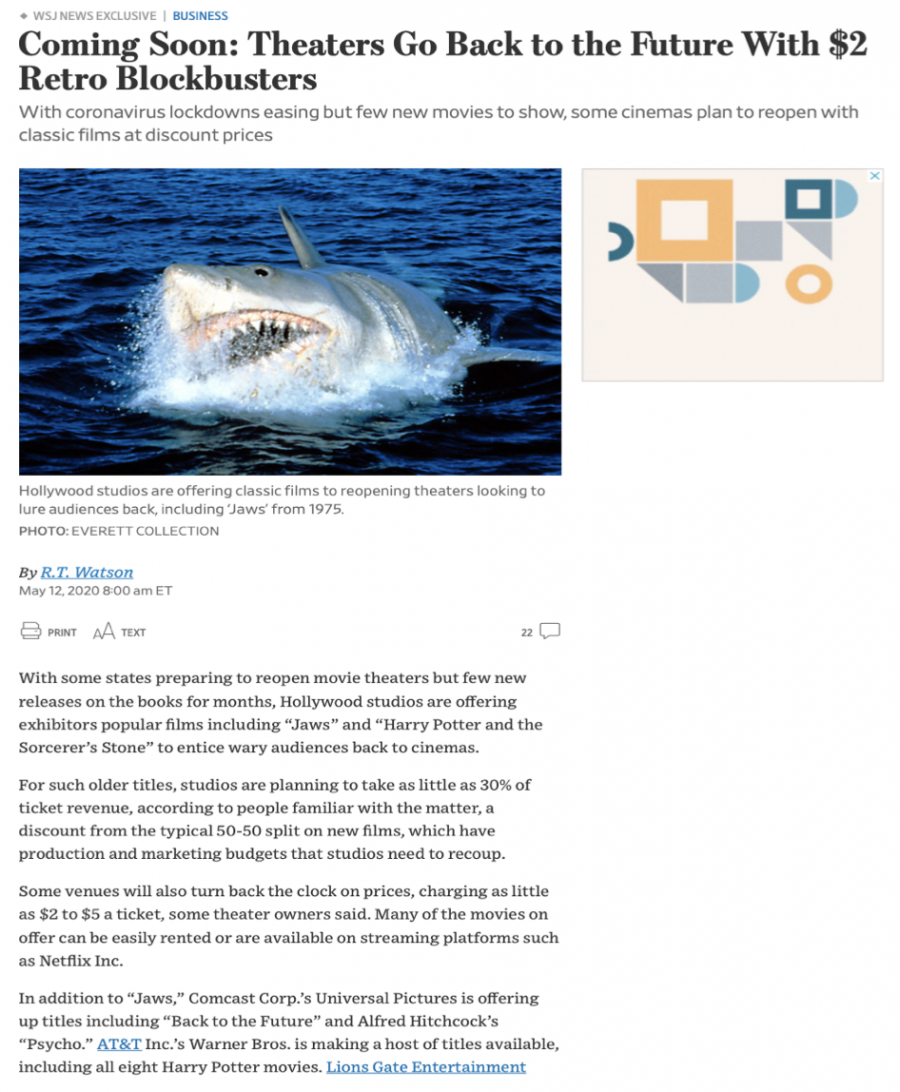
Old movies return in cinemas

Drive-in theaters reemerge during Covid-19
How the movie industry signifies societal processes
When looking at all this we can observe two societal circumstances that are signified by the movie industry during COVID-19. First, niched identity has become an important aspect of the industry. Because movie taste can be an indexical of identity, we can see that both streaming services and theaters try to use this in marketing. The former due to algorithmic prediction and group watch and the latter through making specific experiences for a niched audience in a post-Fordist manner (Amin, 1994). Niched identity is a dominant social reality at this moment (Blommaert & Varis, 2015). Therefore we can say that niched marketing in film is a signifier for a larger societal process. It uses this societal process (Barthes, 1964).
The film industry reflects Post-Fordist changes in society.
Secondly, we see an oligopoly or market increasingly dominated by a few large companies. (Al-Jabir et al 2020) The financial troubles of many small theaters combined with the increased power of streaming services and the studios behind them show this. This points to the second societal circumstance signified by the movie industry. Namely, the increased power of a few large companies. Large companies have been growing and gain more power compared to small ones. Smaller companies must be more creative and have proportionally less power. A few companies often dominate their market. Thus, they gain relatively more power both economically and socially (Lev & Srivastava & Enache. & Govindarajan, 2019). The film industry's oligopolization is a signifier that signifies this increased power disparity as it has a similar situation (Barthes, 1964).
How the movie industry naturalizes social reality
Now I will address how these trends are naturalized through the film industry. Primarily, niched identity and catering to it becomes naturalized. (Cloudy & Turow, 2014) When applying algorithms to niched movie experiences we see a filter bubble. This means that algorithms keep out anything that distorts your view of reality because they just want you to keep watching. People just get to see what matches their niche. Your taste is not challenged. Group watch or the friends you bring to the niched experiences validates it. Friends often have similar tastes. Thus, you are likely not to see anything breaking your niche. We cannot search for what we do not know. Many can thus only look for movies that fit their niches. However, this means no other niches or challenges to your beliefs are visible through movies. Your niche be-comes the naturalized truth (Sunstein, 2017).
As the usage of streaming platforms becomes normalized only having very few large companies in charge becomes naturalized and positively perceived in the eyes of many.
Secondly, most people seem pretty content with streaming services. (Al-Jabir et al 2020) As previously mentioned it is cheap and easy. As the usage of streaming platforms becomes normalized only having very few large companies in charge becomes naturalized and positively perceived in the eyes of many. These companies deliver people good content easily for a low price. Thus, oligopoly could be considered a good natural state. (Barthes,1957)
Conclusion
Thus, the movie industry during COVID-19 signifies and naturalizes social phenomena. It signifies increased nichification of identity and increased power of large companies. A niche feed film industry naturalizes our niched identities, and a comfortable oligopoly naturalizes the idea that large companies have more power.
References:
A, Amin, (1994) Post-Fordism: a reader, Blackwell Publishers, Oxford, UK.
A, Fina. J, Blommaert. (2015) Chronotropic Identities: On the Time space Organization of Who We Are, Georgetown University, District of Columbia, United States of America
A, Watson. (2020) Disney+ subscriber numbers worldwide 2020, Statista.
A, Watson. (2020) Netflix - statistics & facts, Statista.
Diggit Wiki, (2020) Chronotope
Diggit Wiki, (2020) Indexicality.
Diggit Wiki, (2020) Micro-Hegemonies.
G, Stigler. (1964) oligopoly, Journal of political Economy.
M, Albrecht. (1957) The relationship between literature and society. American Journal of sociology
R, Barthes. (1957) Mythologies, Les Lettres nouvelles
R, Barthes (1964) Éléments de Sémiologie. Communications, No.4, pp. 19-135.
R, Barthes. (1983) “ The Fashion System” University of California Press